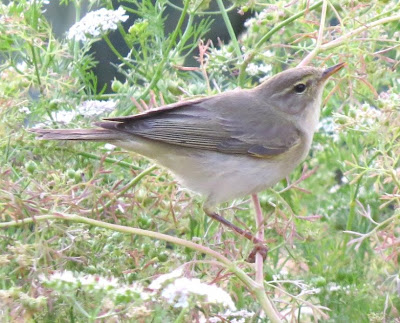I saw my first spotted flycatcher of the spring there a couple of days ago. This is one of the later migrants.
spotted flycatcher
masked shrike
The bird below refused to show his red back for the camera.
red backed shrike
On the other hand, woodchat shrike have been coming through for over a month now and there still seems no end. There were two of them on the farm yesterday evening.
woodchat shrike
I saw a single ortolan bunting there two days ago. This is the first time I have seen them in the Riyadh area outside al Hayer.
ortolan bunting
The waves of European bee-eater "visiting" the bee research unit and its bees seems endless.
European bee-eater
Still no sight of a blue cheeked bee-eater though.
A tree full of European bee-eater
I have now seen a total of three Upcher's warbler at the farm this spring.
Upcher's warbler
second view of Upcher's warbler
I haven't observed any lesser whitethroat for a few days but there is still a trickle of common whitethroat.
female common whitethroat
willow warbler
Willow warbler is currently the most common warbler.
Interestingly I saw graceful prinia on this site for the first time yesterday evening.
male redstart
Both male and female common redstart continue to show.
Rufous bush robin
Rufous bush robin are still being chased around and off by territorial and bigger black bush robin.
tree pipit
I saw two tree pipit and the one remaining wryneck for the last time on Monday evening after about two weeks presence for both species. these birds have finally all moved on.
wryneck
However it was hello again to two (different) whinchat. Their appearance and the number I have seen this spring has fully vindicated by view that it is a regular passage bird. This is opposed to scarce or uncommon as previous observers had thought and which I had agreed with until this season's volumes.
whinchat seen yesterday
Although this article is meant to be primarily about migrants, I can't resist mentioning two resident birds.
Indian silverbill
This Indian silverbill is clearly exhibiting nesting behaviour.
rose ringed parakeet
And I seem to only see rose ringed parakeet at the farm when its about to rain which it did. I wonder if this is coincidence?
I am off to eastern province today to look at some farms. I'll report back what I see.



















No comments:
Post a Comment